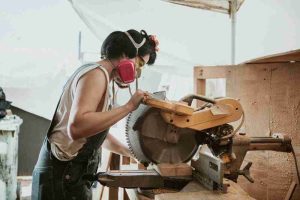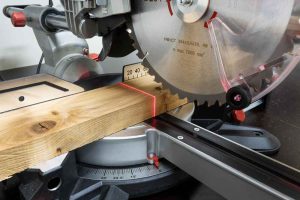Gypsum board, or drywall as many know it, is a crucial unsung champion behind the seamless walls and ceilings of our homes and offices. An omnipresent construction material that most of the time we disregard, but lies at the very heart of modern building practice providing structure and utility. Gypsum association is light-weight, fire-resistant, easy to install and is widely used in commercial and domestic buildings.
So what is this fundamental building block, exactly? In this article, we will explore what Is gypsum board made of its primary mineral, performance-enhancing additives, and its manufacture into the sheets builders and contractors use as a vital building material.
What Is Gypsum? The Core
Gypsum block is a naturally occurring mineral, calcium sulfate dihydrate (CaSO₄·2H₂O). The mineral that forms in layers in sedimentary rocks by the evaporation of saline waters, is soft, white to gray, and is under large deposits in many parts of the world including the cheapest sources in the United States, China, and Iran.
The main source of American gypsum board is mined gypsum, an important part of the construction industry.
Synthetic gypsum is increasingly exploited in addition to natural sources. However, this type of gypsum is actually a by-product derived from a process called flue-gas desulfurization, where sulfur dioxide from power plant emissions is scrubbed out.
Gypsum’s unique properties make it an exceptional building material. It is naturally fire-resistant, which helps slow the spread of flames, enhancing building safety.
Moreover, gypsum is non-toxic, making it safe for indoor use and contributing to healthier living environments. Its versatility allows it to be shaped, cut, and adapted into various forms, supporting everything from standard drywall to moisture-resistant panels and decorative finishes. These characteristics underline gypsum’s crucial role in modern construction.
Composition of Gypsum Board
At the heart of every building product is a mineral-rich core primarily made of gypsum, specifically calcium sulfate dihydrate. This core is crucial because it gives the board its inherent properties, including fire resistance, sound absorption, and durability. When processed, gypsum becomes a lightweight and pliable material that, when reinforced, forms a strong, reliable building component.
The core of American gypsum board isn’t just pure gypsum; it’s supplemented with specific additives that enhance its performance:
- Starch: This component acts as a bonding agent, ensuring that the gypsum adheres well to the paper backing. Starch plays a vital role in maintaining the board’s structural integrity.
- Foaming Agents: These create tiny air pockets within the gypsum, making the board lighter and easier to handle without sacrificing strength.
- Fiberglass and Vermiculite: These additives are key to the board’s fire resistance. Fiberglass strengthens the board and helps maintain its structure under high heat, while vermiculite expands when exposed to heat, slowing down the spread of fire.
Paper Backing is another essential component that gives gypsum board its functionality:
- Types of Paper: The paper used can vary, often made from recycled paper for standard boards, or fiberglass mats for more specialized products, such as moisture-resistant boards.
- Reinforcement Purpose: The paper backing acts as a supportive layer that not only holds the gypsum in place but also provides flexibility and resilience. This dual-layer system ensures that the board doesn’t crack or crumble easily, making it ideal for construction purposes.
The combination of a gypsum core and wood fibers creates a versatile, adaptable board that forms the backbone of many building projects, whether for family of sheet product or commercial use.
With strategic additives and thoughtful design, white board has become a go-to material for builders seeking durability, safety, and ease of use.
What Is Gypsum Board Made Of
The manufacturing process of gypsum panel products is a carefully controlled process that transforms raw gypsum into durable, easy-to-use panels for construction. Here’s a step-by-step overview of what is gypsum board made of:
Gypsum Preparation
The journey begins with natural or synthetic gypsum, which is crushed into a fine powder. This powder is then heated in a process called calcination to remove excess moisture, resulting in calcium sulfate hemihydrate (commonly known as plaster of Paris). This dry powder becomes the base for the board’s core.
Mixing Additives
To enhance the properties of the gypsum core, additives such as starch, foaming agents, and fire-resistant materials like fiberglass or vermiculite are mixed into the powdered gypsum. This mixture is combined with water to create a slurry with the perfect consistency for board formation.
Board Forming
The prepared slurry is spread evenly onto a continuous sheet of paper, which acts as the board’s bottom layer. A protective layer of paper is placed on top, and the entire sandwich passes through a series of rollers to ensure a consistent thickness and shape.
Drying and Cutting
The freshly formed American gypsum board is cut to standard sizes and sent through dryers, where it is heated to remove any remaining moisture. This step ensures that the board hardens properly and maintains its structural integrity.
Quality Control
To maintain high standards, each batch of gypsum board undergoes rigorous quality control tests. These tests assess the sackett board’s strength, thickness, and fire resistance to ensure it meets safety and performance criteria. Boards are checked for uniformity, surface quality, and adherence to regulatory standards before they are packaged and distributed for use.
Varieties of Gypsum Board
Types of gypsum boards come in various types, each designed to meet specific construction needs and challenges:
Standard Gypsum Board is the most common type, used extensively for walls and ceilings in residential and commercial buildings. It offers a smooth, continuous surface that is easy to paint or finish, making it a go-to option for standard indoor environments.
Moisture-Resistant (Green Board) is specially designed for areas with higher humidity levels, such as bathrooms, kitchens, and laundry rooms. This board contains water-repellent additives that help prevent mold and mildew growth, making it more suitable for damp spaces compared to standard gypsum board.
Fire-Resistant Board (Type X) incorporates fiberglass within the core to inherent fire resistance properties. This type of board is often required in building codes for certain parts of structures, such as utility rooms or between shared drywall installation in apartments, to slow the spread of fire and give occupants more time to evacuate.
Soundproof and Impact-Resistant Boards are engineered for commercial buildings and high-traffic areas like schools, hospitals, and offices. These sackett boards are denser and often reinforced with additional layers or special materials to dampen noise and withstand physical impacts, ensuring durability and reduced sound transmission.
Each variety of gypsum board offers unique benefits that make it suitable for specific applications, enhancing both safety and functionality in diverse construction projects.
Environmental and Sustainable Aspects
Gypsum board production has increasingly embraced environmentally friendly practices, making it a more sustainable choice in construction. One significant aspect of this is the use of recycled paper for the board’s backing.
This not only reduces waste but supports the heavy paper recycling industry. Additionally, synthetic gypsum, a byproduct of flue-gas desulfurization in power plants, has become a valuable alternative to natural gypsum.
Using synthetic gypsum repurposes industrial waste that would otherwise contribute to environmental pollution, aligning with circular economy principles.
Energy efficiency is another key factor in the production process. Modern manufacturing facilities employ energy-saving techniques such as improved heat recovery systems and optimized drying processes to reduce energy consumption.
This minimizes the overall carbon footprint of gypsum board production, making it a more responsible choice compared to energy-intensive building materials.
The eco-friendly benefits of gypsum board extend beyond production. Gypsum board is non-toxic, contributing to healthier indoor air quality. Its lightweight nature reduces transportation energy, and its fire-resistant properties enhance safety without harmful chemicals.
Compared to recycled materials like plaster or cement, gypsum board production emits fewer greenhouse gases and uses moisture resistance. These factors make gypsum board a sustainable and practical option for environmentally conscious builders and architects.
Benefits of Using Gypsum Board
Ease of installation
Gypsum board is valued in the construction world for its numerous practical benefits. One major advantage is its ease of installation. Lightweight and easy to cut, it requires minimal effort to transport and fit, speeding up the building process and reducing labor costs.
Fire resistance
Its fire resistance is another standout feature. The core raw material, gypsum, naturally contains water molecules that, when exposed to heat, help slow the spread of fire, enhancing building safety.
Cost Effectiveness
When it comes to cost-effectiveness, gypsum board outshines many other building materials. It offers excellent value for the money, making it an economical choice for projects of all sizes without compromising quality.
Versatility
The versatility of gypsum board is also notable. Whether constructing plaster-based wall finish, creating curved surfaces, or adding partitions and decorative finishes, fire-resistant gypsum board adapts to various design needs. Its adaptability makes it an indispensable component in both residential and commercial construction projects.
Conclusion
Gypsum wallboard is an essential material in modern construction, known for its composition of natural and synthetic gypsum, added components for enhanced properties, and sturdy paper facers.
Its key benefits include ease of installation, fire resistance, cost-effectiveness, and versatile use in various building designs. From material for walls to moisture and fire-resistant varieties, gypsum panel supports safe and efficient construction practices.
As modern construction trends increasingly prioritize sustainability, gypsum board stands out as a reliable, eco-friendly option that balances practicality and environmental responsibility. Builders and architects can trust it to meet the demands of today’s projects while safeguarding future needs.





